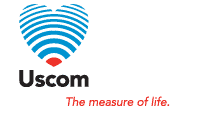Uscom Evidence
Uscom maintains a reference of all current evidence supporting Uscom's products.
For a full list of all evidence see All Evidence
Reliability and agreement of auscultatory and oscillometric blood pressure devices used in pregnancy
Aldridge E, Mollen J, Verburg P, Wittwer M, Roberts C, Arstall M, Dekker G
Published: Pregnancy Hypertension 2018:13(1); S59
Introduction: Accurate blood pressure (BP) measurements are vital in the detection of hypertensive disorders of pregnancy, such as gestational hypertension and preeclampsia. In South Australia, the manual technique remains the gold standard of measuring BP in the antenatal clinic, but may be inferior to sophisticated automated devices.
Objective: The objective of this study was to compare the manual technique with three automated oscillometric BP devices (Microlife Vital Signs Alert (MVSA) [Microlife, Taipei, Taiwan], Arteriograph [Tensiomed, Budapest, Hungary] and Uscom BP+ [USCOM, Sydney, Australia]) in a pregnant population.
Methods: This prospective study recruited 200 pregnant women at any stage of gestation between June and August 2017. Manual BP was measured first to prevent observer bias, followed by two measurements per device in a randomised order. Intra- and inter-technique reliability between repeated measurements was assessed with Intraclass Correlation Coefficients. Bland-Altman analyses evaluated the level of agreement between each variable. Techniques were graded according to British Hypertension Society (BHS) and Association for the Advancement of Medical Instrumentation (AAMI) criteria.
Results: Intra- and inter-technique reliability was excellent for all four techniques (all ICC >0.80). According to our pre-defined levels of agreement for mean systolic BP, MSVA and Uscom BP+ (mean difference <5mmHg), but not Arteriograph (mean difference 8mmHg), demonstrated good agreement with the manual technique. There was acceptable agreement for mean diastolic BP measurements for manual versus the three other techniques. Manual technique, MVSA and Uscom BP+, but not Arteriograph, fulfilled BHS and AAMI criteria.
Conclusion: Although each technique demonstrated excellent intra- and inter-device reliability, only MVSA and Uscom BP+ reached an acceptable clinical level of agreement with manual technique, and also fulfilled the BHS and AAMI criteria. Arteriograph consistently read higher systolic BP readings, indicating it may be unsuitable for use in an antenatal clinic setting.




